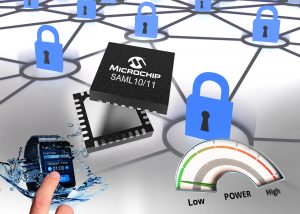As the connectivity and embedded intelligence of smart devices becomes commonplace across many industrial, commercial and domestic applications, the Internet of Things is starting to become engrained in our everyday lives. From the ubiquitous smartphone and fitness wearables to smart speakers, virtual assistants and home/building automation devices/systems, smart energy networks to industry 4.0-enabled machines and factories, even the development of autonomous vehicles — all of these are being enabled by the IoT, and soon it will be hard to imagine life before the IoT era. Gartner have predicted that there will be 20 billion IoT-connected devices by 2020 — and that IoT product and service suppliers will generate revenues of $300 billion.
This explosion of billions of wirelessly connected devices demands technology infrastructure that can handle massive increases in computing power, storage and bandwidth, delivered by low cost, compact and ultra-low power hardware. But as these IoT devices collect more and more data, how we treat and protect that data also becomes more important — and a quick review of 2018 lists of the top IoT trends according to Forbes, IBM and IDG ComputerWorld reveals that security is a common thread. Nicole Eagan, CEO of cybersecurity firm, Darktrace, told 2018’s Wall Street Journal CEO Council Conference how a casino’s high-roller database was hacked via a smart thermometer in an aquarium in the lobby.
With the rapidly accelerating growth of IoT endpoints and increased concerns around security breaches, design engineers are looking for solutions that help reduce power consumption while adding robust security. Enter Microchip, manufacturer of microcontroller, memory and semiconductor devices, with its new SAM L10 and L11 MCU families. These 32-bit MCUs attempt to solve these twin challenges by integrating a wide variety of peripherals into the industry’s lowest power MCU in its class, as well as incorporating a broad array of hardware and software security features, protecting against the dual risks of exposing intellectual property (IP) and sensitive information.
This allows designers to develop secured applications without the battery constraints of less power-efficient MCUs. The new MCU families are based on the Arm Cortex-M23 core and run at 32 MHz, with memory configuration of up to 64 KB Flash and 16 KB SRAM. They boast ultra-low power consumption, as well as an enhanced Peripheral Touch Controller and advanced analogue features, with the SAM L11 variant adding integrated hardware security. They both come in 24- and 32-pin package options and are targeted for use across IoT and security, low power, capacitive touch and general purpose embedded control applications.
The SAM L11 features Arm TrustZone technology, a programmable environment that simplifies the implementation of security and provides hardware isolation between certified libraries, IP and application code. Microchip further enhances robust security by including chip-level tamper resistance, secure boot and secure key storage which, when combined with TrustZone technology, provides a comprehensive security framework that protects customer applications from both physical and remote attacks. IoT nodes driven by a SAM L11 provide strong resistance to remote software attacks, thereby increasing reliability and avoiding downtime of the critical functions of the nodes. The chip-level tamper resistance helps protect nodes from cloning and IP theft.

They also feature Microchip’s latest-generation Peripheral Touch Controller (PTC), allowing designers to incorporate capacitive touch interfaces into their applications that offer best-in-class water tolerance and high noise immunity. Four times faster than the previous generation of PTC, it provides highly-responsive and accurate touch sensing and is supported by the QTouch Configurator and Modular Library, making it simple for designers to add elegant touch interfaces to applications that provide an impressively smooth and efficient user experience, even in the presence of moisture and noise, while maintaining low power consumption. The touch interface makes the devices ideal for a myriad of automotive, appliance, medical and consumer Human Machine Interface (HMI) applications.







